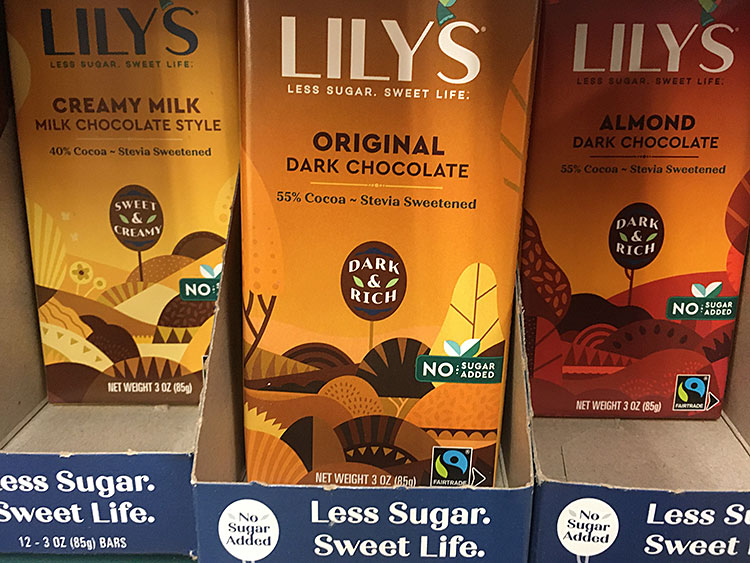By Jondi Gumz
People who favored dark chocolate for its antioxidants have been reeling since reading Consumer Reports’ tests of popular brands for lead and cadmium, which no one would serve their guests, their children or their grandchildren.
For the report posted on Dec. 15, Consumer Reports scientists detected lead and cadmium in all 28 dark chocolate bars tested.
Tested brands included well-known Dove, Ghirardelli, Hershey and Godiva, along with Hu and Chocolove.
For 23 bars, eating one ounce a day would put an adult over a level that public health authorities and Consumer Reports’ experts say may be harmful for either lead or cadmium.
A typical bar size is 2.8 ounces.
Five bars were above those levels for both cadmium and lead. These were Lily’s extra dark (made by Hershey’s), Theo, two bars, Trader Joe’s 85% cacao, and Green & Black’s.
According to Tunde Akinleye, the Consumer Reports’ researcher who led this testing project, consistent, long-term exposure to even small amounts of heavy metals can affect brain development and lead to lower IQ for children.
In adults, frequent exposure can lead to high blood blood pressure, suppress of the immune system suppression and damage the kidney.
Those most affected are people who eat chocolate every day, which about 15 percent do, says market research firm Mintel.
Lead and cadmium can be found in root vegetables such as sweet potatoes and carrots — and small amounts from more than one source can add up.
Safer Choices
It is possible to enjoy a bit of dark chocolate, as five of the 28 were relatively low in lead and cadmium, which to Akinleye shows dark chocolate bars can be made with lower amounts of heavy metals.
These were Ghirardelli, two bars, Taza, Valrhona and Mast.
One consumer, upon hearing the news, wondered how her favorite treat could be made safer.
Chocolate is made from the cacao bean, which contains cocoa solids and cocoa butter.
According to Consumer Reports, dark chocolate’s reputation as relatively healthy is due to the cocoa solids, which are full of flavanols, antioxidants found to lower blood pressure and down-regulate inflammation. Dark chocolate is lower in sugar and higher in fiber than milk chocolate, and it has the minerals magnesium and potassium. However, the cocoa solids are where cadmium is found.
Dark chocolate tends to be higher in heavy metals than milk chocolate, probably because of its higher cacao content, according to Consumer Reports.
Dark chocolates are generally at least 65% cacao by weight, according to Michael J. DiBartolomeis, PhD, a toxicologist and former official at the California Department of Public Health who has researched heavy metals in chocolate.
There is no official cut-off.
Sources
How do lead and cadmium get into the cacao bean?
Between 2019 and 2022, DiBartolomeis and other researchers studied how metals might contaminate cacao, as part of a settlement to a lawsuit against chocolate manufacturers brought by As You Sow, a 30-year-old nonprofit that earlier found high levels of lead and cadmium in some chocolates.
The findings: Cacao plants take up cadmium from the soil, and metal accumulates in the beans as the tree grows. Lead, however, seems to arrive after the harvest. The researchers found lead was typically on the outer shell of the cocoa bean, not in the bean. Lead levels were low soon after beans were picked and removed from pods but increased as lead-filled dust and dirt accumulated on the beans drying in the sun.
DiBartolomeis reports collecting beans on the ground with the outer shell loaded with lead.
Changes in harvesting and manufacturing practices could address the problem, according to Danielle Fugere, president of As You Sow.
This could include minimizing soil contact with beans as they lie in the sun, and drying beans on tables or clean tarps away from roads or with protective covers to keep lead-contaminated dust away. Or finding ways to remove metal contaminants at factories when beans are cleaned.
Cadmium changes could mean carefully breeding plants to take up less of the heavy metal but that’s not a quick fix. Growers could replace older cacao trees with younger ones, as cadmium levels tend to increase as the plants get older, and remove or treat soil contaminated with cadmium, again not a quick fix.
•••
Consumer Reports has created an online petition for consumers to appeal to Trader Joe’s, Hershey’s, Mondelez and Theo to reduce risky heavy metals. See https://action.consumerreports.org/20221215_heavymetalschocolate_cro

